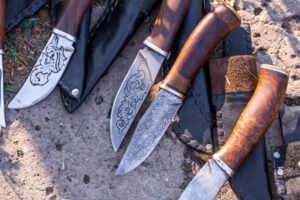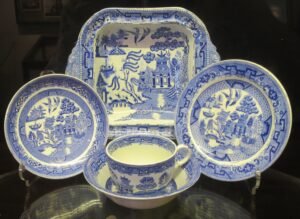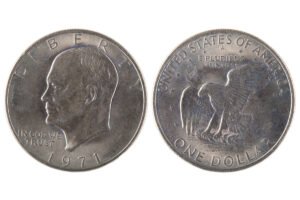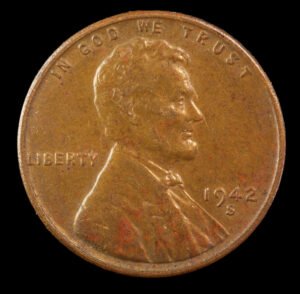We all know that wood planes are a crucial tool for carving inlays in wooden items, but it’s not a new carpentry practice. Different types of planes have been used since the 1700s, which are worth a lot today. In fact, some may even sell for as high as $400 – 500!
So, if you have an old, dusty wood plane at your workstation, you may be in luck! Don’t worry; you don’t need an expert to check if your piece is authentic. Today, I’m going to help you with antique wood plane identification and valuation! So, get ready for it!
Key Takeaways
- Old, long, hand-shaped, and wooden planes are the most authentic and valuable antique planes. But you can also look for metal bodies and iron levers to raise costs.
- With antique wood planes, you have four options: bench, molding, chisel, and scrub. The bench and scrub options are more precious.
- Choose a rectangular, rabbet, or plow-shaped wood plane for all your inlay work. But, if you are eyeing returns, then a squarish or bull-nosed shape is perfect.
- The larger, no.30 – 50 planes in a bare metal finish have a high value. You can also pick orange, white, or black planes if you like them colored.
Key Identification Features of Antique Wood Planes

Identifying antique wood planes is an easy-peasy job! Just rotate your piece and check if you see an iron blade and lever. If yes, kudos! You have an antique model worth $200 – 300. But if you see shiny sides, it’s surely a new, cheaper version.
Here are some more features to ensure you’re holding an antique wood plane:
- Check if you see an iron lever cap, a tote, or a handle and a knob for grip.
- Measure the fore plane of your model. It should be at least 16 – 20 inches long.
- Rotate and look for any etched marks, signed logos, or numbers on the base.
- Check if the blade’s angle is at least 20° for smoother cuts.
An Overview of Wood Plane’s History
History and debate go hand-in-hand. And even old wood planes couldn’t escape this! While some say that Romans made the first wood plane, others point at the Egyptians. But what we know for sure is that the oldest planes were loose and needed a grip!
It was in the 1800s that Leonard Bailey figured it out! And he added a metal lever cap to adjust the thickness. So, if you see such a half-metal, half-wood body, you can price it for $500 – 600. And yes! It’s this era that branded wood planes were born!
The later 1900s saw more machine-made products. For example, you can see thin, grooved soles and levers. They offer a better grip but seize the handmade touch. So, makers automated the process, leading to common, cheaper models.
4 Types of Old Wood Planes With Values
Does your antique shop have too many wood plane models? Try to divide them by these four wood plane types, their uses, and features to estimate the price!
1. Bench Planes

As the name says, bench planes level out thick, woodworking benches. They are large and heavy and come with a 45° angle that flattens the base in each stroke. Plus, you’ll also see sturdier bronze lever caps and spin wheels, costing $100 – 120.
2. Molding Plane
Ask your dealer if he has a wood plane for irregular surfaces. And if you get one, check if it has 10 – 12” flutes, wedges, and blades. If yes, it’s a molding plane! You can also look for fixed, tapered blades to raise the cost to $90. If not, a value of $50-60 is good!
3. Chisel Plane
If you see a handy, noseless plane with a thin, 60° blade, it’s a chisel plane. Made in the 1800s, it’s perfect for trimming small shutters, windows, and cabinets. Plus, most have a thick, ⅛” iron blade and depth-adjusting tool. So, they are more precious, at $100 – 150.
4. Scrub Planes

Scrub planes are the ones that flatten rough-cut or bumpy pieces. So, most have short, stout bodies that move freely and level huge material at a time. You’ll also see thick, strong clamps and textured blades for embossing. So, they are expensive, $130 – 200 for one!
6 Factors That Determine the Value of Antique Wood Planes
As we saw, every antique wood plane’s cost changes with the type. But do you know its shape, age, color, and brand also impact wood plane value? Let’s see how!
1. Antique Wood Plane’s Age

We all pay more for old, handmade tools, right? The same holds for antique wood planes! So, if you want good returns, get a 1700s plane with a rough blade and an adze shape.
But, if you want it fancy and branded, the 1800s models are best. And, if you want an all-in-one wood plane, go for the refined 1900s wood planes!
But yes, all wood planes don’t come with a stamp date and age. So here’s how you can check it yourself!
How Do You Spot a 1700s Wood Plane?
Look for planes with small 8 – 9 inch bodies, iron sole plates, and jagged blades to spot these. You can even find a 100% wood body, push bar, and wedges with these. Plus, most will look rectangular or squarish with a circular cutter on top.
Also, these planes won’t have any blade adjusters or caps. So, try to get pieces with intact knobs for a high value of up to $400. If not, $200 – 300 is a good price!
How Do You Know If Your Wood Plane Is from the 1800s?
Does your wood plane have a composite wood and metal body? Does it have flexible lever caps and adjustable depths? If yes, then it must be from the 1800s. You’ll also see sharper, linear blades with them. Plus, they come in various colors – red, blue, and white.
Here, if your piece has a 2-3 mm sole, it costs $100 – 150. But, if it’s less than that, it might value only up to $90.
How Does a 1900s Wood Plane Look?
The 1900s wood planes are very refined. They have grooved flutes, handles, and clamps on each of their edges. Plus, they will also have stamped logos and patent numbers for easy tracking. Overall, these planes are worth $50 – 60.
| Year | Age | Patent Number | Old Wood Plane Type | Average Valuation |
| 1990s | 33 years | EP2060373B1 | Woodworking Plane | $50 – 60 |
| 1864 | 159 years | 4584772 | Hand-held Wood Plane | $90 – 100 |
| 1862 | 161 years | 4704795 | Adjustable Wood Plane | $100 – 120 |
Check if your wood plane has a riveted or split-screw joint sole for an old make.
2. Shape

Before you think that wood planes are only cuboidal, let’s break the myths! Yes, a rectangular shape helps achieve proper levels and chisels, but old rare wood planes have many unique shapes to try!
For instance, you can get an 1800s plow-shaped plane for all your delicate mortise joints. Or, you can get a bull-nose plane for uneven surfaces. And refer to our table if you want to know the cost of each!
| Old Wood Plane’s Shape | Average Valuation |
| Rectangular or Cuboidal | $100 – 120 |
| Squarish or Cubical | $80 – 90 |
| Plow Plane (Mortise / Dado) | $70 – 100 |
| Rabbet – Shaped | $50 – 60 |
| Bull Nose or Half-Round | $50 – 60 |
| Compass shaped, Round | $30 – 40 |
Pick wood planes with a finger-shaped or shoulder blade for easy handling.
3. Color

If you want old, high-value planes, the most obvious choice is bare metal or wood! But if you want colored planes, hand-painted black or yellow planes are best!
Of these, oxidized pieces like brown and white are more precious, whereas enameled green and blue ones are cheaper.
Want to know how each color affects the cost of your wood plane? Let’s check below!
| Old Wood Plane’s Color | Average Valuation |
| Bare Metal, Wood | $100 – 120 |
| Orange, Stained Wood | $80 – 90 |
| Black, White, Ivory | $60 – 70 |
| Yellow, Brown, Orange | $50 – 60 |
| Green or Olive | $30 – 40 |
| Blue or Aqua | $10 – 30 |
Aged metal planes might look green or brown. So, rinse the piece with vinegar and dab it lightly to see the original color.
4. Antique Wood Plane Brands

If you want a high-power, polished wood plane, get a branded one! Company-made pieces, such as those by ‘Stanley,’ or ‘Union’ are rough and tough. So, they have a high demand and a faster resale.
But how do you check for brands? Well, for that, check the plane’s blade for an etched logo or company name. If not, look for curved totes or hand-cut screws for a reliable make.
Here are some old wood plane brands for reference:
| Old Wood Plane Name | Manufacturer | Antique Plane Type | Average Valuation |
| Router Wood Plane | Stanley | Molding Planes | $70 – 80 |
| Blue Grass Bench Plane | Belknap | Bench Planes | $80 – 100 |
| Wood Plane no.5 | Union | Scrub Planes | $100 – 120 |
Avoid getting chipped or rusty wood planes as they lower the cost by 10 – 12%.
5. Rarity
Well, it’s no secret that rare, difficult-to-get models fetch the highest value! So, if your wood plane shows a different shape than the one we mentioned or has shiny gold or silver handles, you can raise the cost by 20 – 25%.
And if it has any royal or World War origins, you can even price it up to $12,000, depending on the shape and color. Here are some of the world’s rarest wood planes to check out!
| Rare Wood Plane’s Name | Valuation |
| Francis Nicholson Plane | $5000 |
| Carpenter Patent Plow Plane | $17,600 |
| Adam’s Patent Patternmaker’s Plane | $19,000 |
| Norris Jointer Planes | $12,000 |
| Miller Patent No.50 Gunmetal Plane | $18,650 |
6. Old Wood Plane Numbers
Did you see a no.1 or no.2 stamp on your wood plane? Well, that’s for the size! Here, the numbers are descending. That means a no.2 plane is larger than a no.1 plane, and so on, up to no.50.
Of these, no.2, 5, 10, and 20 are common, while the rest are rare. So, you can pick them for a high value of up to $500.
What Wood Are Old Wood Planes Made Of?
Back then, people made wood planes from any locally available hardwood like beech, oak, ash, maple, and mahogany. Of these, oak ones fetch the highest value of $90 – 100.
How Do You Clean Antique Wood Planes?
Rinse your wood planes with warm water and dab on some vinegar to remove all the sawdust. Later, you can use some lubes to achieve a shiny finish.
What Oil Do You Use on a Wood Plane?
You can grease your wood plane with any store-bought coconut or linseed oil. Even regular Vaseline or moisturizer is a good choice.
Antique wood planes are very sharp and easy to use. Thanks to their iron blades, soles, and levers. But you can even explore their shapes, colors, and sizes to pick the best one for you! And if you want branded or high-value pieces, you always have our list!
It’s not just wood planes, many other antique tools, such as old wrenches, antique plows, and hand saws, are highly collectible today! If you want to learn how to identify and value these tools, hop on to my other detailed guides!









